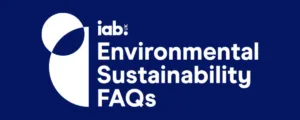Local businesses benefit the most from being able to advertise their products or services through local publishers. However, they often can’t reach publishers at the times that they need to – typically, in the evenings, and publishers do not offer a self-service solution. Because of this, local advertisers choose to manage their advertising through the likes of Google and Facebook, which also have the benefits of reach, user-friendliness, and strong pricing.
Norwegian ad tech company Adnuntius recognised this was an issue, and realised there was something that could be done to solve the problem.
“We already had an ad platform that could manage all of the publishing inventory, so it was quite simple for us to build out a new and more user-friendly interface that basically almost anybody can use to book a campaign,” explains Stian Remaad, Co-founder and CEO of Adnuntius. “Technically, it wasn’t the biggest project for us to do, and it made sense, because there’s a huge number of small- and medium-sized businesses that are increasing their spending.
“It’s an attractive audience, if you can reach them. The problem is that very few publishers have the systems, interfaces, or processes to actually do that. So, most small businesses go to Google and Facebook to manage their advertising.”
Local thinking
The self-service dashboard provides a simple overview of the running and in-review campaigns, shows how much the advertiser’s budget is, and shows when the campaign is going to start and end.
When creating a new campaign with a particular publisher, the self-service advertiser can select from a portfolio of product options created by the publisher. Each product can have targeting criteria, ad formats, and pricing conditions baked into them.
Once a product has been chosen, the advertiser can upload their creative material, connect a URL, and add their budget. There’s also an option to add a coupon code that can be created and provided by sales teams when they’re selling the portal to advertisers. Once submitted, the ad is sent to the publisher for review to make sure it doesn’t contain any illegal or unwanted content. If an ad isn’t approved, the advertiser receives an email telling them why, but can resubmit with changed creative.
“It’s basically a software that makes it easier for the publisher to launch their own portal,” says Remaad. “It can take a couple of weeks to configure everything and get the design material. But it’s a really simple way to get up and running and offer this channel for small buyers to be able to spend money with a publisher.”
Adnuntius’ self-service advertising offering is the fourth component in a platform that is also made up of a private marketplace, a data management platform, and an ad server.
Implementing self-service makes it easy to expand to other parts of the platform, including the marketplace, which enables larger buyers to do automated buys. In acting as the sole intermediary between the advertiser and the publisher, both provide the basis for building “a long-lasting relationship” between the parties, according to Remaad.
Remaad is proud of the self-service product, describing it as a solution that excites publishers and provides them with “a new segment of advertising revenue that they haven’t seen before”.
“They’re quite happy knowing that it’s easy to get started with. And it’s also a low-risk cost model. There are no big upfront investments,” Remaad concludes.









